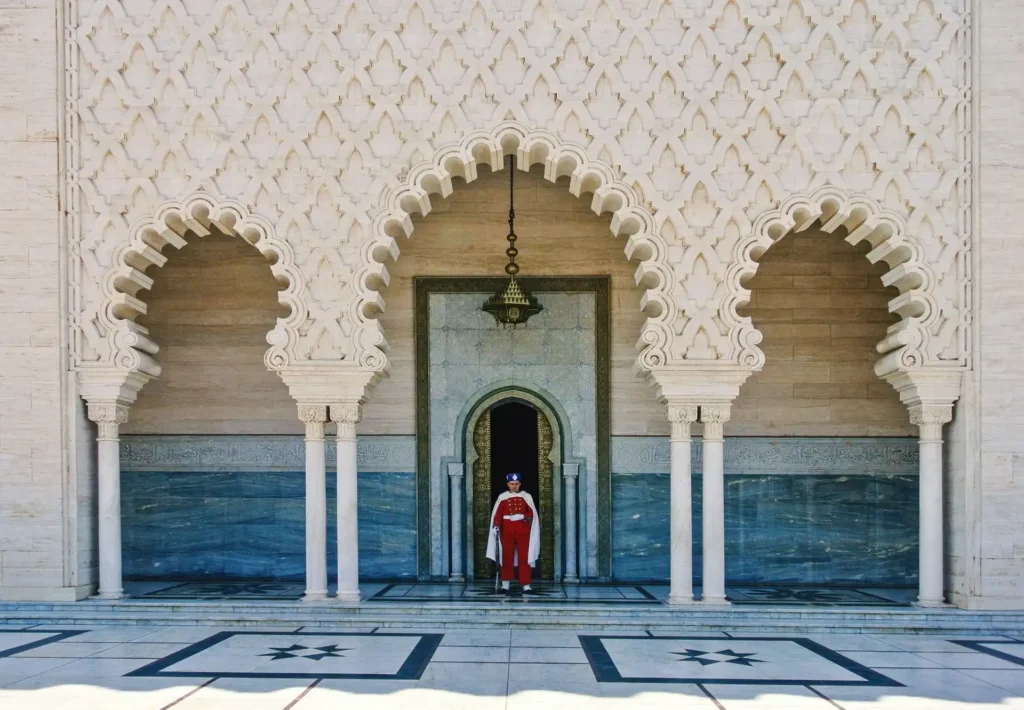
The best time to visit Morocco – a travellers guide
Nestled at the crossroads of Africa and Europe, Morocco is where ancient traditions meet modern vibes. From the vibrant streets of Marrakech to the timeless Sahara, Morocco is a whirlwind of experiences waiting for you to explore.
In this blog post, we discover the best month to visit Morocco. We unveil the must-see destinations, the delectable cuisine, and the rich cultural tapestry that make Morocco an extraordinary holiday destination.
Helpful tip: Remember to sort out your travel money with us before travelling to Morocco!
Moroccan dirhams are a minor currency and can be difficult to find at most major banks or post offices.
Luckily, our online service offers fantastic exchange rates, so you’ll be all set to explore the deserts of Morocco. Discover the best times to visit Morocco and prepare for an adventure you’ll never forget!
Explore Morocco – a month-by-month travel guide
Planning a Moroccan getaway? Take the time to discover all the wonders this country holds. Understanding its climate will set the stage for an unforgettable holiday.
First things first, sort your travel money. Moroccan dirhams might not be easy to find, but we’ve got you covered.
We offer great exchange rates and insider tips to enhance your vacation. If you’ve already booked your holiday, Order your Moroccan dirhams today.
If you’re still in the planning phase, stick around. Let’s journey through the seasons and explore the best time to travel to Morocco.
Buy your Moroccan dirhams now
Visiting Morocco during Ramadan
Considering a trip to Morocco during Ramadan? It’s a time of spiritual reflection and fasting from sunrise to sunset. (It’s worth noting that the dates of Ramadan vary each year).
You might notice some changes in the opening hours of restaurants, shops, and other places.
But don’t let this discourage you! It’s truly a remarkable sight to witness hundreds, sometimes even thousands, of worshippers gathering at local mosques for evening prayers.
Expect vibrant celebrations when Ramadan ends with Eid al-Fitr. Iftar is a special meal to break the fast, and watch as the streets and markets come to life at sunset.
It’s a wonderful time to witness Moroccan culture and hospitality in full swing. So, if you’re up for a different travel experience, Ramadan in Morocco can be quite rewarding.
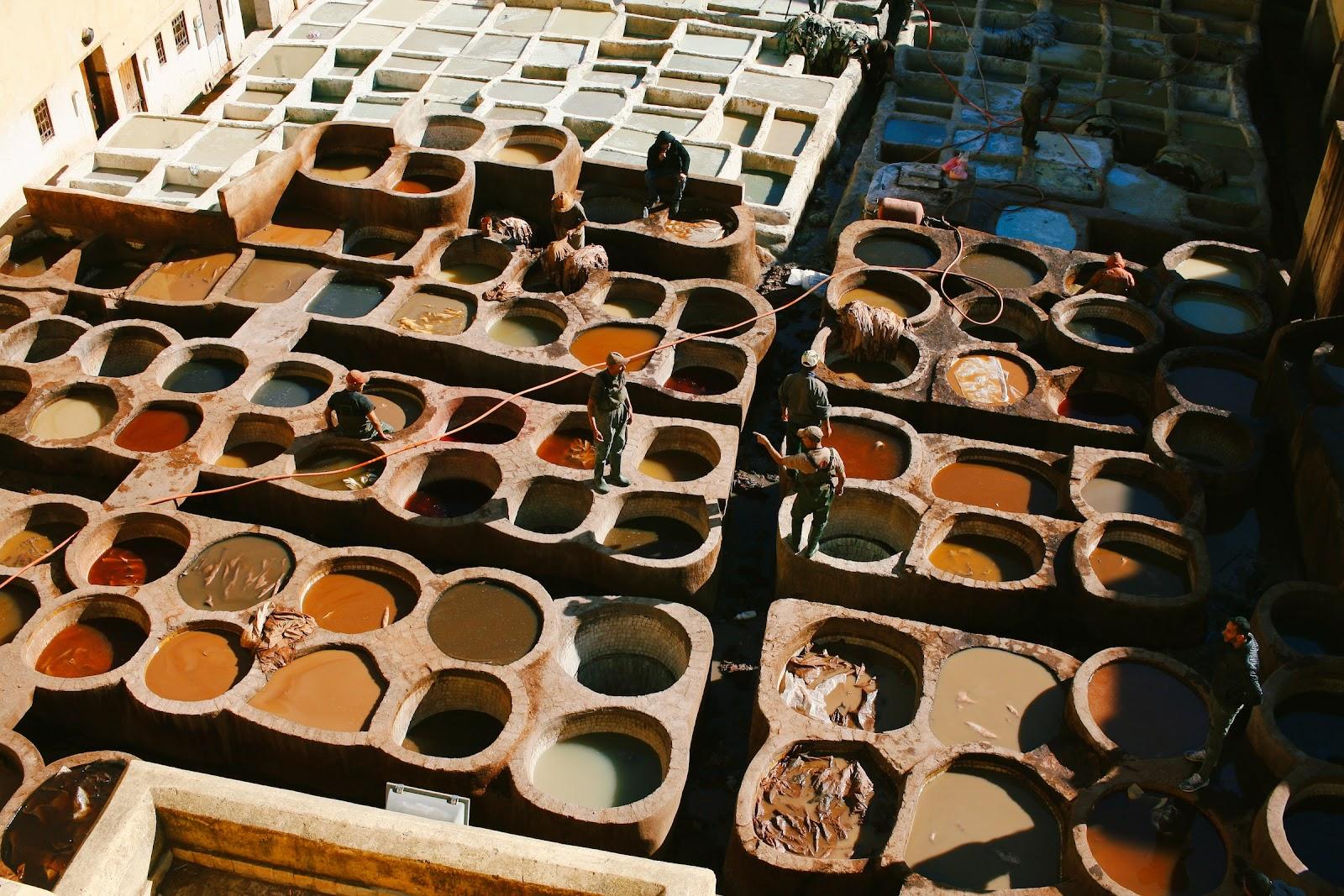
Dress code for tourists in Morocco
Wondering what to wear in Morocco? There is no formal dress code for tourists in Morocco, but it’s best to keep it modest and respectful.
Loose-fitting, knee-length clothing is a good choice for both men and women. Women might want to have a scarf handy for entering religious sites.
Avoid overly revealing outfits; opt for lightweight fabrics to stay comfortable in the heat. Remember to pack layers for cooler evenings when planning a trip to the desert or mountains.
Remember, blending in with the local dress code is an easy way to show respect for the culture. Plus, it’ll help you feel more at ease during your adventures in Morocco!
January
Not a big fan of scorching temperatures? Well, January is your month! It’s the coolest time in Morocco.
Morocco’s climate varies in January. In the northern regions, such as Tangier and Casablanca, temperatures range from 10 to 15°C (59°F).
Moving to central cities like Marrakech, it’s milder, with temperatures between 8 and 18°C (64°F).
However, it can get quite cold in the Atlas Mountains and Sahara Desert, even falling below freezing at night. It’s a good idea to pack some extra layers!
Morocco sees a good bit of both snow and rain. Northern cities and the mountains often get a nice dusting of snow.
Overall, January’s a great time for exploring cities and the desert, but bring warm clothes for the evenings!
Top 3 things to do in Morocco in January
- Experience Yennayer (Amazigh New Year): Traditional Berber communities come together in the heart of Morocco for a special celebration. It falls on January 12th or 13th. Folks feast and dance in honour of the deep connection between the Amazigh people and nature.
- Camp in the Sahara Desert: Enjoy camel rides, gaze at the starry desert sky, and revel in the unique beauty of the dunes during winter.
- Discover the Atlas Mountains: If you’re a winter sports fan, you’re in for a treat! These peaks offer some great skiing and snowboarding action. The Oukaimeden resort is the place to be, with good runs and rentals.
These activities promise an unforgettable Moroccan adventure in January!
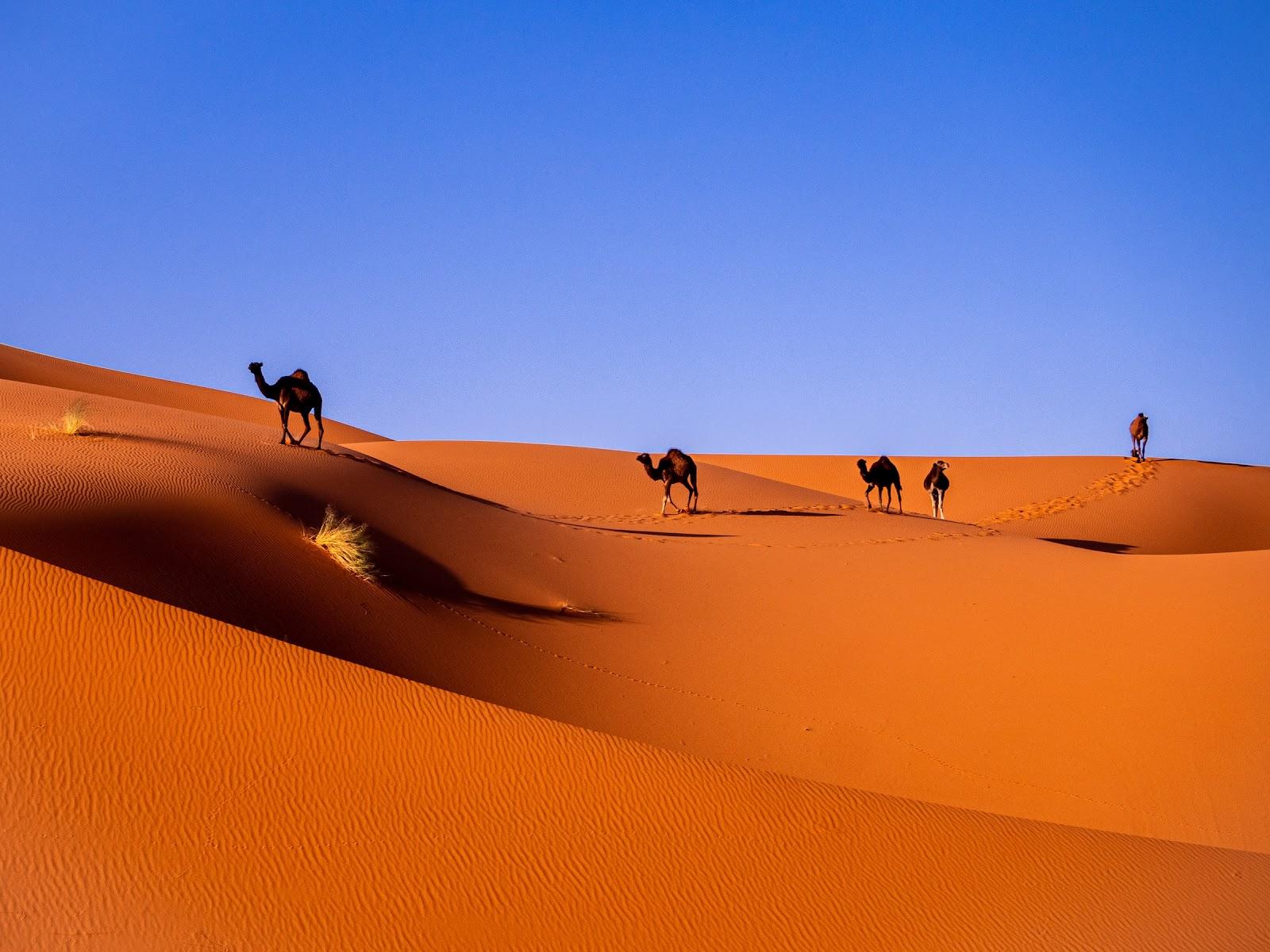
February
In February, Morocco transitions towards spring. Coastal spots like Casablanca and Essaouira range from 12 to 18°C (64°F).
The Sahara starts warming up, hitting around 20°C, and there’s less rain.
You might still find pockets of snow in the Atlas Mountains, perfect for unique winter adventures. Keep in mind that nights can still be chilly, so packing layers is a smart move.
Overall, February is a lovely time to visit Morocco, striking a balance between winter and the promise of spring.
Top 3 things to do in Morocco in February
- Explore the Almond Blossom Festival: This charming event in Tafraoute takes place in mid-February, celebrating the bloom of almond trees. Locals and visitors gather for festivities, including traditional music, dance, and delicious almond-based treats.
- Visit the Ouzoud Falls: February’s a great time to witness these majestic waterfalls at their most vibrant. The lush surroundings make for a stunning backdrop.
- See the ancient city of Fes: Discover the historic medina, its intricate architecture and bustling markets. It’s a fascinating peek into Morocco’s rich heritage.
February presents a delightful window to experience Morocco. Don’t forget your camera – the almond orchards offer picture-perfect moments.
March
March brings a lovely transition in Morocco’s weather. You can expect temperatures ranging from around 14 to 22 °C (71°F).
In the Sahara, temperatures rise, making it more comfortable for desert adventures. However, nights can still be cool, so pack some extra layers.
In places like Marrakech and Fes, daytime temperatures start to warm up, averaging around 20°C (68°F). Evenings are milder but still cool, around 9°C (48°F).
March is a great time for many experiences, from city tours to desert adventures.
Top 3 things to do in Morocco in March
- Wander the Gardens of Marrakech: March brings colour to Marrakech’s gardens. Take a stroll in places like Jardin Majorelle for a serene experience.
- Explore Chefchaouen’s Blue Streets: Spring paints Chefchaouen’s streets in vibrant blue. It’s a perfect time for leisurely walks and capturing stunning photographs.
- Visit the International Nomad Festival: It takes place mid-March at the remote Saharan village of M’Hamid El Ghizlane. You’ll immerse yourself in camel races and poetry readings.
These activities in Morocco allow you to enjoy the country’s diverse offerings.
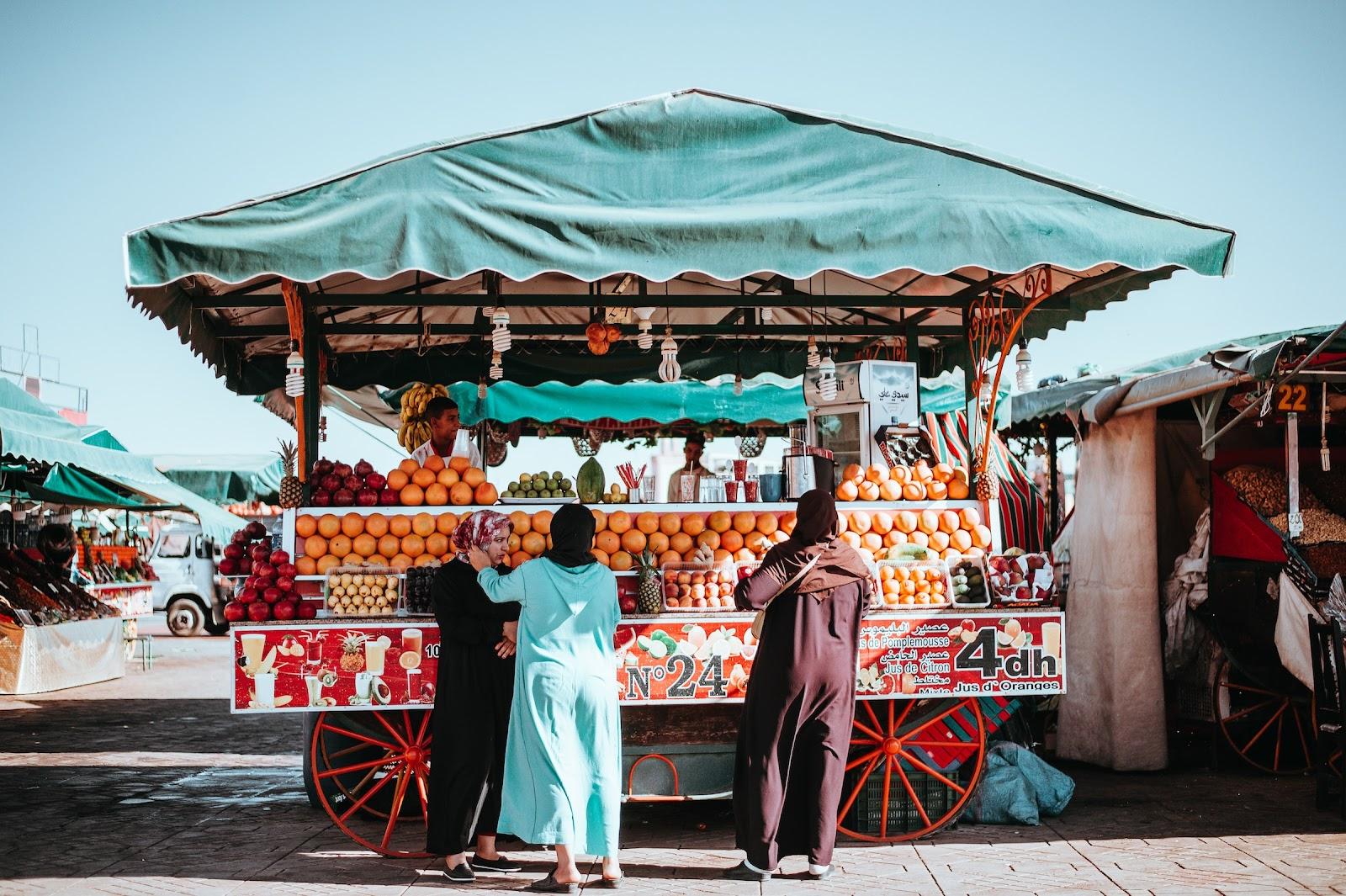
April
In April, the weather warms up. You can expect daytime temperatures to range from about 17 to 25°C ( 77°F). It’s just perfect for exploring the cities and soaking in the sights.
Coastal areas like Casablanca and Essaouira offer a comfortable climate. Temperatures range from 15 to 19°C ( 66°F).
In the Sahara, temperatures are getting warmer, reaching around 26°C (79°F) during the day.
Nights are milder but still pleasantly cool. In most places, temperatures range from 9 to 14°C (57°F). It’s a good idea to bring some layers for the evenings.
April brings a lovely mix of warmth and coolness, making it a fantastic time to explore Morocco.
Top 3 things to do in Morocco in April
- Visit the Merzouga World Music Festival: It takes place in the small desert town of Merzouga. This breathtaking natural backdrop is a one-of-a-kind experience.
- Attend the Sufi Festival: Held in the city of Fes. The Sufi Festival is a mesmerising celebration of spiritual music and dance.
- Explore the Dades Valley: With the weather warming up, the Dades Valley is a picturesque destination. Take a scenic drive through the valley, known for its stunning rock formations and lush oases.
These experiences promise an unforgettable adventure in Morocco during April!
May
May is a splendid time to visit Morocco! The weather is warm and inviting. Expect daytime temperatures ranging from 21 to 28 °C ( 82°F). It’s perfect for exploring the bustling medinas and enjoying outdoor activities.
Coastal areas like Casablanca and Essaouira offer a delightful climate. Temperatures hover around 17 to 21°C ( 70°F). It’s great for seaside relaxation and water sports.
In the Sahara, daytime temperatures become pleasantly warm, reaching around 31°C (88°F). It’s an excellent time for desert adventures, although nights can still be cool.
Nights across Morocco are generally mild, ranging from 14 to 19°C ( 66°F).
May brings a wonderful mix of warm days, comfortable evenings and occasional showers. It’s an ideal time to explore Morocco’s diverse landscapes and cultural treasures.
Top 3 things to do in Morocco in May
- Visit the Majorelle Garden in Marrakech: May brings the Majorelle Garden to life with vibrant colours. Explore the serene oasis and discover the exotic plants and stunning blue architecture.
- Experience the Mawazine World Rhythms Festival: This Festival is a celebration of music and culture held in Rabat, Morocco. It’s one of the largest music festivals in the world, drawing artists and music lovers from all corners of the globe.
- Attend the Festival of the Roses: In Kelaat M’Gouna, you can see and smell beds of sweet Damascus roses as far as the eye can see.
The Festival of the Roses coincides with the end of the harvest season and is a fantastic cultural experience. May offers a delightful combination of cultural experiences and natural beauty in Morocco.
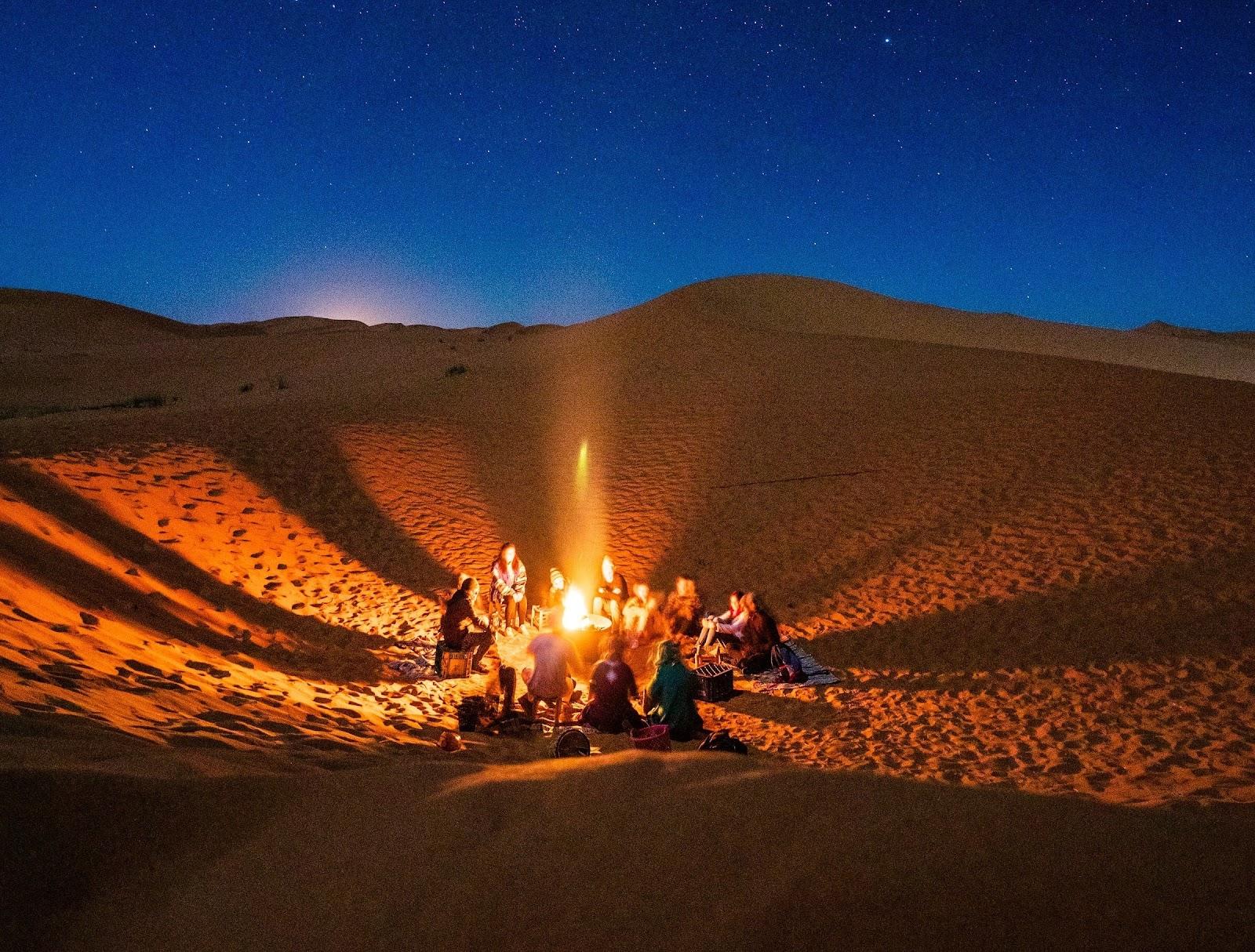
June
June is the start of Morocco’s warm summer season; it brings a lovely Mediterranean climate. Coastal areas like Casablanca and Essaouira enjoy temperatures ranging from 18 to 25 °C (77°F). It’s perfect for beachgoers and water enthusiasts.
In cities like Marrakech and Fes, the heat starts to pick up. Daytime temperatures reach around 30°C (86°F).
Evenings stay comfortably warm at about 17 to 20°C ( 68°F).
Heading south to the Sahara, temperatures soar to around 40 °C (104°F) during the day. Nights are balmy but not too hot, around 22°C (72°F).
June marks the beginning of Morocco’s dry season, so expect lots of sunshine and minimal rainfall. It’s a great time for outdoor adventures and exploring the diverse landscapes of this beautiful country.
Top 3 things to do in Morocco in June
- Experience the Cherry Blossom Festival in Sefrou: This summer festival transforms the town into a vibrant spectacle. Elaborate floats and lively parades fill the streets; the highlight is the crowning of ‘Miss Cherry’.
- Attend Essaouira’s Gnaoua Music Festival: This is a spectacular celebration of music and culture held annually in the coastal city of Essaouira.
- See the Fes Festival of World Sacred Music: This unique festival brings together artists and musicians from various cultures and faiths to create a harmonious blend of sacred music.
June in Morocco is a month filled with music festivities. So, if you’ve got a passion for music and culture, this is the perfect time to plan your visit.
July
July in Morocco marks the height of summer. Daytime temperatures reach up to 38°C (100°F). It’s perfect for those who love the heat.
Coastal cities like Casablanca and Essaouira are a bit milder. Temperatures range from 19 to 27°C ( 81°F). It’s still warm, but the ocean breeze offers some relief.
If you’re heading to the Sahara, prepare for daytime temperatures that soar above 40°C (104°F). Nights are warm but not as hot, hovering around 23°C (73°F).
July is a dry month for most of Morocco, with minimal rainfall. This means lots of sunshine and clear skies.
Top 3 things to do in Morocco in July
- Enjoy Water Sports in Essaouira: The coastal town of Essaouira is perfect for water enthusiasts. Try your hand at windsurfing and kitesurfing, or even take a leisurely boat ride along the stunning coastline.
- Visit the annual Jazzablanca festival: It features soul, funk, new age and jazz music, creating a melting pot of musical talent and creativity.
- Experience the Marrakech Biennale: This contemporary art festival, held every two years, showcases artwork from Moroccan and international artists.
July in Morocco promises a mix of seaside adventure and a taste of the thriving art scene.
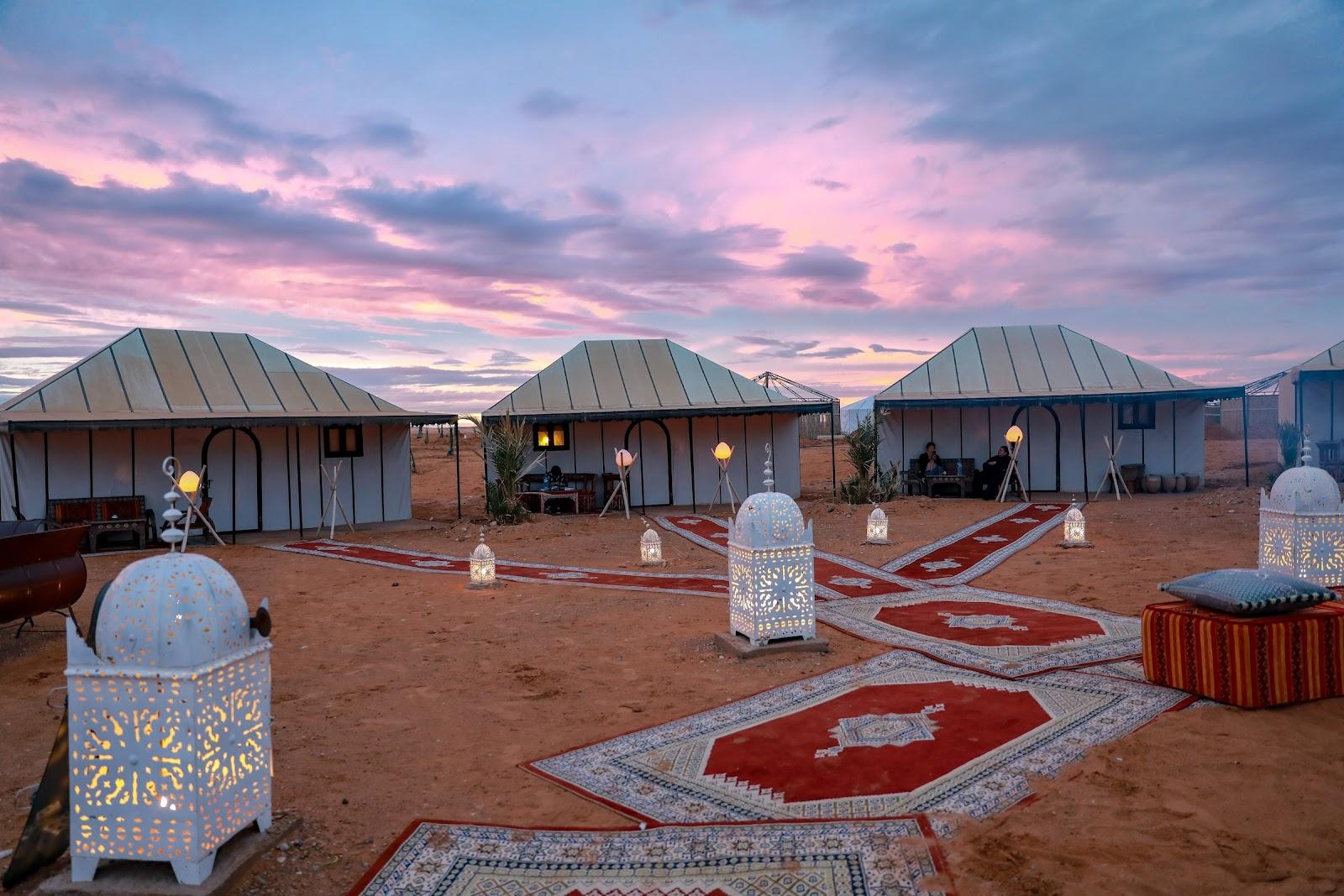
August
August in Morocco is the epitome of summer. It’s hot, especially in inland cities like Marrakech and Fes. Daytime temperatures can soar up to 40°C (104°F).
The Sahara Desert experiences scorching temperatures, often exceeding 45°C(113°F).
Coastal cities like Casablanca and Essaouira offer some relief from the heat. Temperatures range from 20 to 28°C (82°F).
Evenings across Morocco remain warm. Temperatures hover around 20 to 25°C (77°F).
August is generally dry, with minimal rainfall, ensuring plenty of sunny days for outdoor adventures.
While the heat can be intense, August also offers a chance to enjoy the coastal beauty of Morocco.
Top 3 things to do in Morocco in August
- Escape to the Atlas Mountains: August offers a chance to explore the Atlas Mountains. Enjoy cooler temperatures, stunning scenery, and encounters with local Berber communities. It’s a refreshing escape from the summer heat.
- Cool down by the Dades River: This is a refreshing oasis nestled in the heart of Morocco. Crystal-clear waters wind through a rugged limestone canyon, allowing you to cool off from the midday sun.
- Visit the Dar Batha Museum: Set in a beautifully restored palace, this museum is a treasure trove of Moroccan craftsmanship. It’s a great way to escape the heat.
September
September marks the transition into Morocco’s delightful autumn season. While it’s a bit cooler than the peak summer months, it’s still comfortably warm across the country.
In inland cities like Marrakech and Fes, daytime temperatures range from 25 to 32°C (90°F). This offers a pleasant climate for exploring the bustling medinas and historic sites.
Heading south to the Sahara, daytime temperatures are warm, averaging around 35°C (95°F). During desert nights, the temperature cools.
September is a dry month across Morocco, with minimal rainfall. You can expect plenty of sunshine and clear skies, perfect for outdoor adventures.
Top 3 things to do in Morocco in September
- Experience the Imilchil Marriage Festival: Also known as “Souk Aam,” it is a festival to celebrate love and unity. You’ll see young Berber men and women from different tribes come together to find their life partners.
- Attend the Tissa Horse Festival: This lively event showcases the deep connection between the Berber people and their revered horses. The festival features thrilling horseback races and impressive displays of horsemanship.
- Enjoy the harvest season: As summer transitions into early autumn, the focus shifts to fruits like olives, figs, and grapes. Olive groves see families and workers come together for the annual harvest.
Enjoy the beginnings of autumn in Morocco, harvesting fruit and attending cultural festivals.
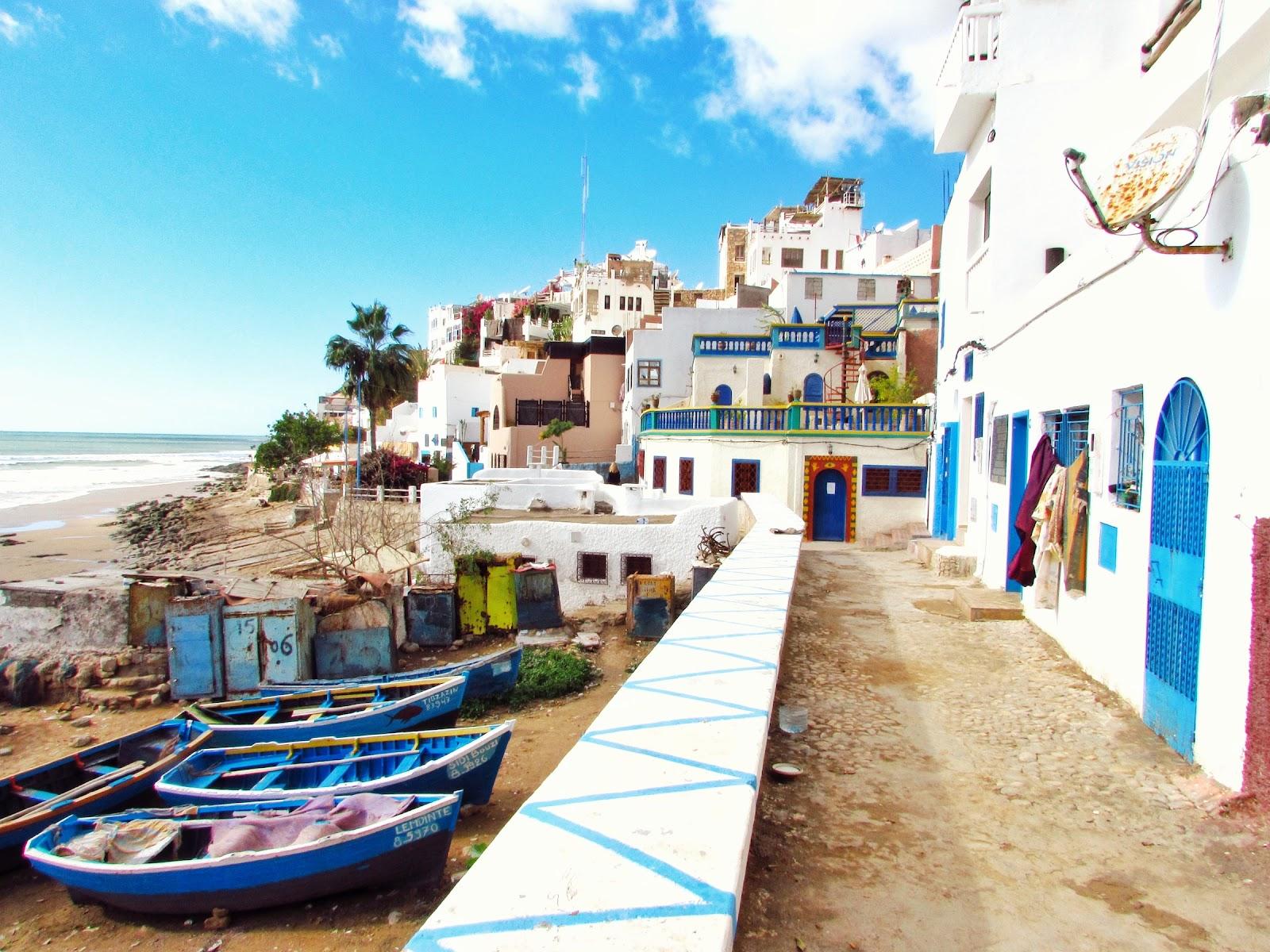
October
October in Morocco ushers in a delightful autumnal climate. As the summer heat wanes, the temperatures become comfortably mild across the country.
In cities like Marrakech and Fes, daytime temperatures range from 20 to 28°C (82°F). This creates a perfect environment for exploring the historic medinas, markets, and cultural sites.
The coastal cities, including Casablanca and Essaouira, offer a refreshing sea breeze. Temperatures hover between 17 and 23°C (73°F).
Heading south to the Sahara Desert, daytime temperatures remain warm, averaging around 30°C (86°F). The nights are pleasantly cool, making it an ideal time for desert adventures.
October sports clear skies and minimal rainfall. It’s a fantastic time for hiking, camel treks, and exploring Morocco’s diverse landscapes.
Top 3 things to do in Morocco in October
- Attend the Erfoud Date Festival: Held in late October, it celebrates the harvest of dates. From the buttery Medjool to the honey-like Deglet Nour, there’s a date to suit every palate!
- Wander through the colourful Medina of Chefchaouen: Nestled in the Rif Mountains, Chefchaouen is known for its charming blue-painted streets. In October, the weather is just right for exploring.
- Enjoy the Music Festival in Essaouira: It’s a unique fusion of traditional Gnaoua music, which has deep roots in Moroccan heritage.
October in Morocco offers something extraordinary for every traveller. Embrace the vibrant colours and warm hospitality!
November
The temperatures are comfortably mild in Morocco.
In cities like Marrakech and Fes, daytime temperatures typically range from 17 to 24°C (75°F).
The coastal regions, including Casablanca and Essaouira, offer refreshing sea breezes. Daytime temperatures hover between 16 and 22°C ( 72°F).
Heading south to the Sahara Desert, the weather remains comfortably warm. Daytime temperatures average around 26°C (79°F). The evenings are cool, providing a comfortable environment for desert adventures.
November sees less rain, offering ample opportunities for outdoor exploration.
Top 3 things to do in Morocco in November
- Discover the Historic Medina of Fes: Step into a living time capsule in the ancient Medina (town) of Fes. This UNESCO World Heritage site is a maze of narrow alleys, bustling markets, and centuries-old landmarks.
- Embark on a scenic Atlas Mountains trek: November offers ideal weather for trekking in the Atlas Mountains. The air is crisp, and the landscapes are breathtaking. It’s a chance to experience Morocco’s mountainous region’s natural beauty and warm hospitality.
- Attend the annual International Film Festival: It takes place in Marrakech and features film screenings, red carpet events, and awards ceremonies, focusing on Moroccan and international cinema.
Morocco’s cities are quieter in November. Take your time and soak in all the must-see sights without the usual hustle and bustle.
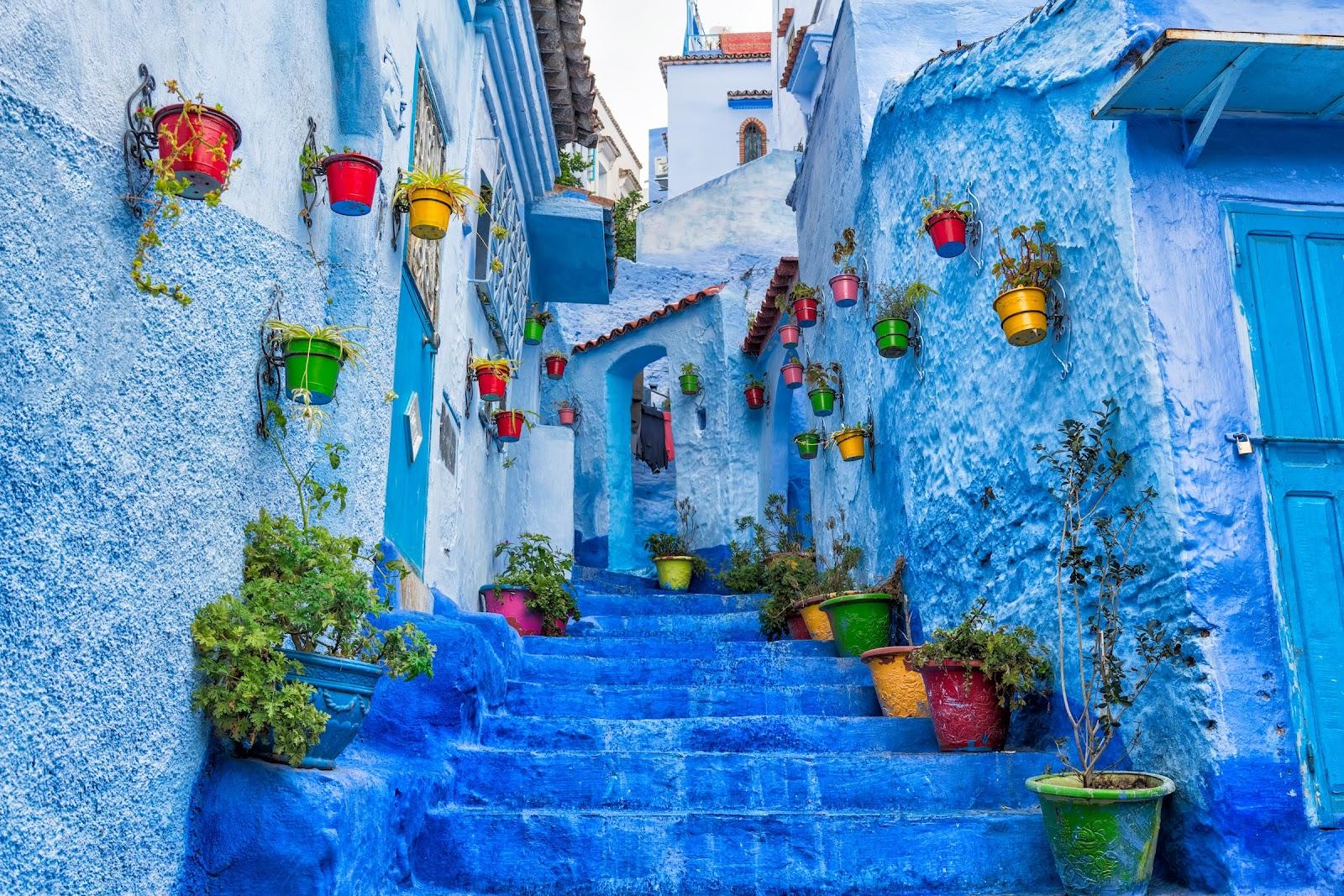
December
December in Morocco signals the onset of winter.
In cities like Marrakech and Fes, daytime temperatures range from 12 to 18°C (64°F). This cooler weather adds a refreshing touch to exploring the bustling markets and historical sites.
Coastal cities such as Casablanca and Essaouira offer a more temperate climate. Daytime temperatures hover around 15 to 19°C (66°F).
Heading south to the Sahara Desert? Daytime temperatures are around 20°C (68°F). The nights can get chilly, so packing layers is a good idea.
December sees an increase in rainfall along the Atlantic Coast. While it’s not constant, having an umbrella or raincoat handy is advisable.
The festive spirit begins to take over the cities, and there’s a special charm in experiencing Moroccan culture during this holiday season.
Top 3 things to do in Morocco in December
- Visit the Michlifen Ifrane Resort: During the winter season, the resort transforms into a haven for winter sports enthusiasts. You can enjoy skiing and snowboarding on the well-maintained slopes.
- Celebrate Eid al-Mawlid: Morocco comes alive with a festive spirit during Eid al-Mawlid, the birth of the Prophet Muhammad. The streets and buildings have colourful decorations, and you’ll often find special lighting arrangements.
- Relax in coastal towns: Head to Essaouira or Agadir. The climate is milder, and you can enjoy leisurely walks along the beach and savour fresh seafood.
Winter in Morocco is a magical season. Whether you’re exploring medinas or celebrating Moroccan traditions, you’re in for an unforgettable adventure!
Takeaways
When is the best time of year to visit Morocco? Anytime really! Morocco has something special to offer all year round.
Whether you’re drawn to the blooming Damascus roses during spring or the summer music festivals, Morocco welcomes you with open arms.
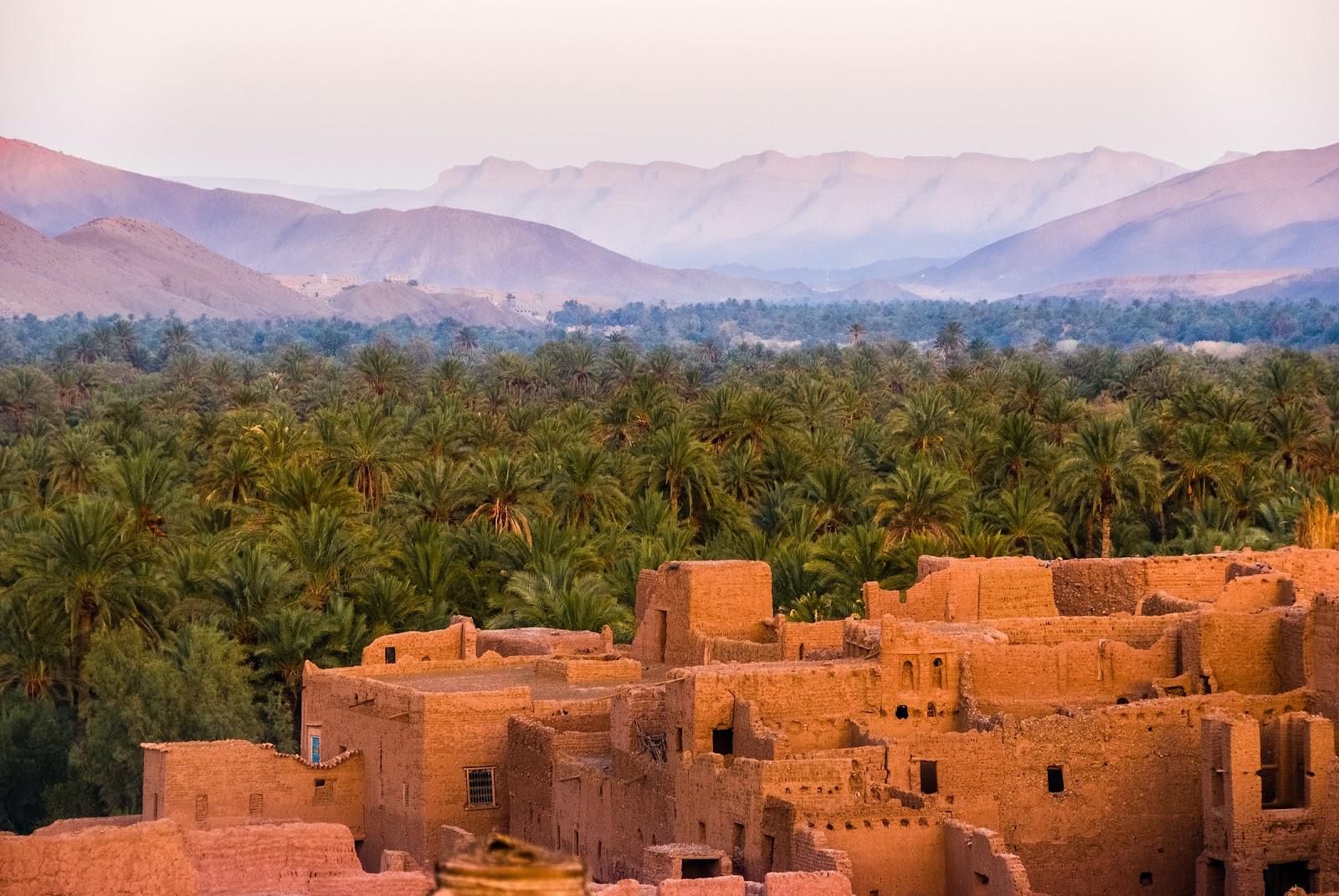
Order your Moroccan travel money
Get the best rates with Manor FX
Travelling to Morocco from the UK? Then embark on your Moroccan adventure with Manor FX!
The currency of Morocco is the Moroccan dirham. Secure your Morocco currency today and benefit from our great exchange rates. You’ll have more cash to enjoy on your upcoming trip!
Enjoy the ease of quick delivery and a user-friendly online ordering process. Have your Moroccan banknotes delivered securely to your doorstep or workplace!
You can also collect your currency at the Manor FX bureau near Heathrow. Get set for an unforgettable holiday in Morocco!
FAQs
What is the rainy season in Morocco?
Visiting Morocco during the rainy season, typically from November to March, can offer a unique and distinct travel experience. Here are some tips to make the most of your trip during this period:
Explore cultural sites: Morocco’s rich cultural heritage shines even in the rain. Visit historic cities like Marrakech, Fes, and Meknes. You can explore ancient medinas, palaces, and museums while staying dry indoors.
Mountain adventures: If you enjoy winter sports, the Atlas Mountains receive snowfall during the rainy season. It’s a great time for skiing and snowboarding!
Visiting Morocco during the rainy season can offer a different perspective on the country’s beauty and culture
What is the hottest month in Morocco?
The hottest month in Morocco is typically July. During this month, especially in the inland and desert areas, temperatures can soar, reaching their peak.
Coastal escapes: Consider spending time in coastal cities like Essaouira, Agadir, or Casablanca. The sea breeze can provide some relief from the heat.
Enjoy indoor attractions: Morocco offers a wealth of indoor attractions like museums, palaces, and historic sites. Explore these during the hottest hours to escape the sun.
Stay in riads: Traditional Moroccan riads often have inner courtyards with cooling fountains and gardens. It’s the perfect way to retreat from the heat.
What is the coolest month to visit Morocco?
The coolest month to visit Morocco is typically January. During the winter, temperatures across the country are generally cooler, making it a pleasant time for outdoor activities and sightseeing.
Coastal cities like Casablanca and Essaouira have milder winters. Inland cities like Marrakech and Fes can be comfortably cool during the day, with colder nights.
January is a good choice if you prefer cooler weather for your travels.
What is the cheapest month to visit Morocco?
The cheapest month to visit Morocco is during the shoulder seasons. This is spring (March to May) and autumn (September to November).
Additionally, visiting during the low season, which is the summer months (June to August), can also be affordable. But you should prepare for hot weather in many parts of the country, especially inland and the desert.
Keep in mind that prices vary depending on the region within Morocco you plan to visit. Research and flexibility in your travel plans can help you find the best deals.